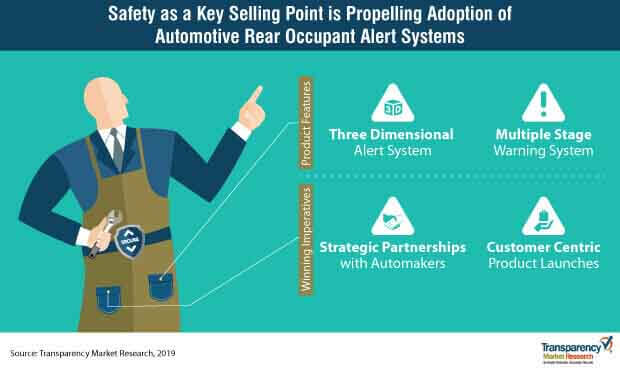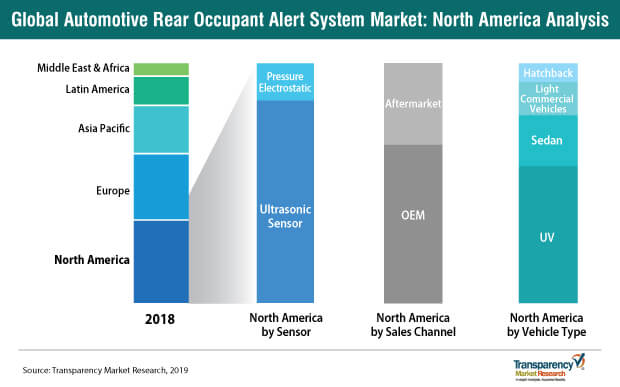
As the global automotive space has been undergoing a sea of change since the past decade, newer technologies are making inroads and transforming the way vehicles were, and will be engineered in future. Extensive focus on safety as a key aspect is certainly paying off, which can be gauged by the way automotive rear occupant alert systems are being embraced and appreciated. Gone are the days when safety systems in automobiles were going through a phase of passive adoption. Rather, they are emerging as key imperatives facilitating safe and hassle-free driving experiences. As the automotive space heads toward ‘a connected future’, technologies of this kind are set to see a massive growth in demand.
Transparency Market Research (TMR), in its new research study, brings to the foreground compelling insights into the automotive rear occupant alert system market to assist the readers with pragmatic strategy making processes.

Planning to lay down future strategy? Perfect your plan with our report brochure here
How Demand for Automotive Rear Occupant Alert Systems has Shaped Up?
Automotive rear occupant alert systems trace their origin back to the first three-point seat belts introduced by Volvo in 1959, which was one of the most-effective safety technologies in the history of the automotive industry. Since then, multiple technologies have made their mark and nurtured the levels of safety in modern-day vehicles. Automotive rear occupant alert systems, which emerged as a major ‘breakthrough’ in the automotive safety space, witnessed a topsy-turvy course of adoption till 2018. Revenue from the automotive rear occupant alert system market closed in on a valuation of more than US$ 50 Mn in 2018.
Though the adoption of automotive rear occupant systems is still at a very nascent stage, its penetration is likely to scale up more than 15 times in the next 8 years. Since the 1980s, safety itself has become a major selling point in the automotive space, which is the key reason why a large pool of automakers are already incorporating automotive rear occupant alert systems into their offerings. According to the TMR research study, the global automotive rear occupant alert system market is estimated to reach a value of around US$ 800 Mn in 2027.

Want to know the obstructions to your company’s growth in future? Request a PDF sample here
Trends Redefining Market Growth
Contributions by OEMs in the deployment of automotive rear occupant alert systems continue to be monumental, as these OEMs play a vital role in fitting these systems into the ‘to-be-rolled out’ vehicle models. However, a significant customer bias towards cars with in-built rear seat occupant alert systems is making great strides, thereby ushering in the inflow of advanced vehicle models having the ‘rear seat occupant alert’ as one of their salient features.
Apart from fundamental sensor movements, other ways are being explored and worked on for timely alerts; some of the effective ones being horn alerts and flashlight alerts. In addition, automotive rear occupant alert systems are also being connected to smartphones, which will further oil the wheels of real-time alerts. Mandates for incorporating automotive rear occupant alert systems across Europe, with an objective of strengthening child safety, is creating a plethora of opportunities for companies to reap sizeable profits.
Read TMR Research Methodology at: https://www.transparencymarketresearch.com/methodology.html
Read Our Latest Press Release:
- https://www.prnewswire.com/news-releases/power-management-integrated-circuits-market-predicted-to-be-valued-at-us56-48-bn-by-2026–applications-in-highly-lucrative-automotive-consumer-electronics-sectors-evident-of-monumental-growth–tmr-301262055.html
- https://www.prnewswire.com/news-releases/rising-trend-of-remote-work-due-to-covid-19-pandemic-will-breathe-fresh-air-of-growth-across-the-endpoint-detection-and-response-edr-market-says-tmr-301266666.html





